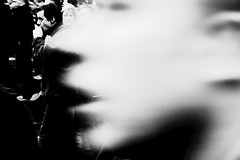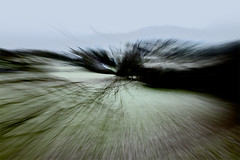Cwm Blaen Taf Fechen is my new long
term project. If you don't know the area it's the valley immediately below the
peaks of the Brecon Beacons above the Neuadd Reservoirs. After the tight,
claustrophobic confines of ’Mametz Wood’ it feels vast and empty, it is a
wind-blasted wilderness and I'm finding freedom there.
It's an area I know well; I visited
it frequently many years ago for what was probably my first ’proper’ series,
the Islands Project. This, though, will be different.
I learnt many things from Mametz, not
least the limitations of social media - how dare I share art that's dark,
difficult and metaphorical. Art has no more reason to be uplifting and cheerful
than TV should always be Downton Abbey.
So I'm thinking yet again of changing
my relationship with social media; people there, for the most part, don't want
to be challenged, it's leisure time and they'd prefer cat videos thank you very
much. I'm not yet sure how this will pan out, but you can expect more posts to
be in the form of blogs and less of them.
The second, and perhaps more
pertinent thing, I learned from Mametz was the value of photographing a small
area, repeatedly over a long period of time. It's not exactly the first time
I've approached my work like that, but it was perhaps the first time it really
sank in -just how valuable it is to an artist.
Also, if we listen to the advice of
Mike Jackson
and Chris Tancock who are in my humble estimation both producing ground breaking work in
landscape photography (if you'll forgive the pun), then long term devotion to a
place is the way forward for the more serious landscape artist.
I'm disinterested in the ’low hanging
fruit’ of new locations that barely scratch the surface. They tell me nothing
about the place, the photographer or the way we interact with our surroundings.
If we stop to think about how many
(perhaps the majority) of us first became interested in landscape photography -
by recording the places we've visited or hiked past - then perhaps it's
unsurprising that so few stop to question this approach. It feels entirely
natural, organic and of course easy.
Yet what if there was a way to not
only improve the depth and originality of our photography, but also find it
more satisfying? For that to happen we have to question our assumptions and
ourselves. It won't be found on the ’well trodden path’. Art has the potential
to tell us something about ourselves, those tiny insights can be a great
nourishment to the mind, something no end of pretty sunsets can ever hope to
accomplish.
Cwm Blaen Taf Fechen is (for now at
least) conceptually free. That's a major challenge to someone who's worked for
many years within the bountiful confines of conceptual ideas. I'm going there
without preconceptions, ideas or external motivations, but to explore through
the artistic space of not knowing. Of course, you'd be right to say that is, in
itself a concept! It's something I feel I need after 13 months of exploring the
psychological trauma of war and it is something I need to do for the
furtherance of myself as a landscape artist.
The artist and writer Emma Coker in
Tactics for Not knowing: Preparing for the Unexpected (2013), wrote
‘Artistic practice recognises the
practice of not knowing, less as the preliminary state (of ignorance) preceding
knowledge, but as a field of desirable indeterminacy within which to work. Not
knowing is an active space within practice, wherein an artist hopes for an
encounter with something new or unfamiliar, unrecognisable or unknown’.
(Emma Bolland has written a great
piece on this.)
One of the difficulties with finding
that “field of desirable indeterminacy” is breaking down the barriers of
received perception. Breaking out of the way of seeing and expressing ourselves
through what we've seen, made or been told previously. The feeling freedom of
that vast area is one of the hindrances; it's so easy to stride purposefully
onwards ignoring the detail of what is there. Repeated visits are the key here,
to break that mindset, to get the clichés, assumptions and received wisdoms out
of my head.
I've been visiting the area now for
about a month, and haven't shared any images because they felt stale,
uninspiring and from someone other than myself. Finally I feel I'm starting to
find that space where I can start to think afresh, and more critically see
afresh.
I've been delving deeply into the art
of not knowing and there is light at the end of the tunnel - just barely
glimpsed. I've no idea how this will progress (which I should think of as a
good thing) it may falter at this one image, it may take a wholly divergent path
or I may find images to complement this one. The one thing I do know is that
after a month I've barely scratched the surface. So for now, here is my first
image from Cwm Blaen Taf Fechen.




